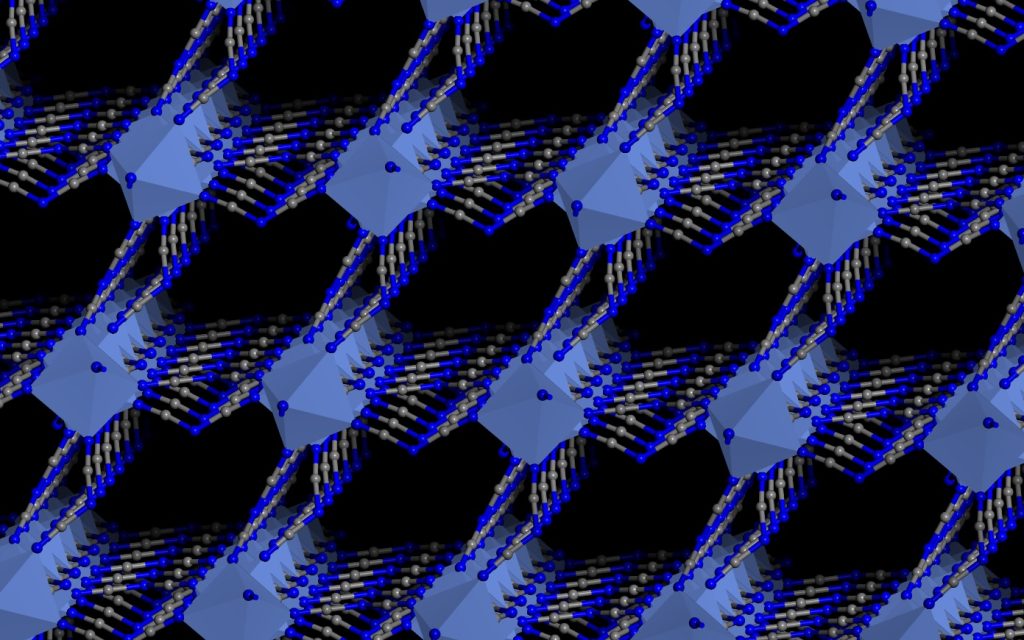Tuning the mechanical properties of dicyanamide-based molecular perovskites

Caloric systems, capable of heating and cooling environments in response to a change in external conditions, are in ever increasing demand, be it in fridges, freezers, air conditioning or radiators. Typically, these systems are based on the latent heat absorbed or emitted during a liquid to solid phase transition; this is the same effect that means that water at 100 C is ‘cooler’ than steam at 100 C and why steam gives a much nastier burn. However, the hydrocarbon materials typically used for liquid-vapor calorics are undesirable due to safety concerns and contributions to global warming. Recently the barocaloric effect, where a solid-to-solid phase transition under pressure is used to emit or absorb heat, has emerged as a safer and greener alternative to liquid-vapour systems. In this work researchers in the University of Reading, the Technical University of Munich and Queen Mary University of London used density functional theory calculations and high-pressure experiments to reveal the relationship between chemical composition and mechanical properties (important for barocaloric activity) in a family of molecular perovskite materials. The work provides new insights and guidelines to researchers looking to develop barocalorics that are economically competitive with liquid-vapour caloric systems.
Authors: Shivani Grover; Stefan Burger; Keith T. Butler; Karina Hemmer; Pia Vervoorts; Gregor Kieslich; Ricardo Grau-Crespo
DOI: 10.1039/d3ce00009e
